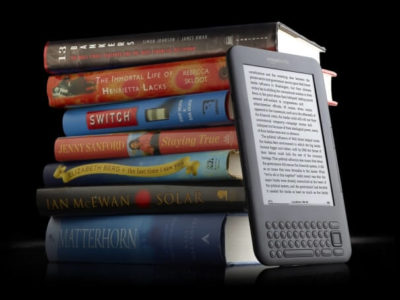With the rising popularity of eReaders such as the Amazon Kindle and the Apple iPad, college students are rejoicing. Gone are the days of backs breaking with the weight of textbooks and crippling prices. It is almost a dream come true, except not everybody is on board.
Amazon Damast, writer for Businessweek.com, explores a pilot program for the Amazon’s Kindle DX in the fall 2009 article, “E-Book Readers Bomb on College Campuses”. The pilot program was done in 7 universities in the U.S., two of which are business schools. The students’ reactions, according to Damast’s report, were mainly disappointment.
Students were unhappy with the eReaders when it came to viewing class materials and textbooks. Damast wrote that the pilot program’s hopes of making students’ lives easier was defeated after “students reported that the Kindle was a poor replacement for a textbook, hard to use in the classroom, and difficult to navigate.”
Price is another reason why some students are not all on board with eReaders in general. Amazon’s Kindle ranges from $139 to $189. The Amazon’s Kindle DX, the eReader that can better support electronic textbooks, is in the $300 range. Barnes & Nobles’s Nook and Nook Color are $149 and $249 respectively. Apple’s iPad starts at $499. Compared to the national average cost of $1,137 for textbooks per year in 2010 to 2011 according to CollegeBoard.com, buying an eReader doesn’t guarantee that students will never have to buy a textbook again. While more textbooks are becoming available in digital format, there are still a good number of them that remain in print.
Piracy also rears its ugly head when eReaders are concerned. In an interview with Tom Spring’s PCWorld.com article “E-Book Piracy: The Publishing Industry's Next Epic Saga?” Ed McCoyd from the Association of American Publishers said, “We are now seeing large volumes of e-books being pirated on everything from file-sharing networks to websites.” These pirated copies of e-books range from actual e-books to scans of books and PDF copies of the books.
Additionally, eReaders in general lack necessary features to be completely accessible to students with hearing and sight disabilities. While eReaders provide audio features for e-books, the fact remains that it would difficult for certain students to use those features without a voice option feature for the menu.
While eReaders have the potential to save students from the physical and financial burden of textbooks, eReader technology might need step it up before it can fully replace print textbooks.



















